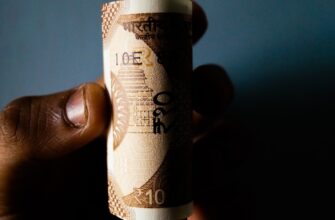The USD to IDR exchange rate directly impacts travelers, investors, and businesses engaged in US-Indonesia transactions. With Indonesia’s economy deeply intertwined with global markets and commodity exports, forecasting this currency pair requires analyzing complex economic, political, and international factors. This article examines current trends, expert predictions, and actionable strategies for navigating USD/IDR fluctuations.
## Understanding USD/IDR Exchange Rate Dynamics
The US dollar (USD) and Indonesian rupiah (IDR) relationship reflects the economic interplay between the world’s largest economy and Southeast Asia’s emerging powerhouse. Historically, IDR has shown volatility, notably during the 1997 Asian Financial Crisis when it lost 80% of its value. Recent years have seen pressure from US interest rate hikes and commodity price swings. Key metrics influencing valuations include:
* Interest rate differentials (Federal Reserve vs. Bank Indonesia policies)
* Indonesia’s trade balance and current account deficit
* Foreign investment flows into Indonesian markets
* Global USD strength as a ‘safe-haven’ currency
## Critical Factors Shaping the USD to Rupiah Forecast
### 1. Monetary Policy Divergence
When the US Federal Reserve raises interest rates to combat inflation, it typically strengthens USD, pressuring emerging currencies like IDR. Conversely, Bank Indonesia’s rate decisions aim to balance inflation control with economic growth.
### 2. Commodity Price Volatility
As a major exporter of coal, palm oil, and nickel, Indonesia’s currency thrives when global commodity prices rise. A 10% increase in coal prices, for instance, historically correlates with IDR appreciation.
### 3. Geopolitical and Domestic Stability
Political events (e.g., elections), regulatory changes, and social stability influence investor confidence. Uncertainty often triggers capital outflows, weakening IDR.
### 4. Global Risk Sentiment
During market turbulence, investors flock to USD, causing IDR depreciation. Conversely, stable periods see capital return to high-growth economies like Indonesia.
## Short-Term USD/IDR Forecast (2023-2024)
Most analysts project continued volatility with a moderate strengthening bias for IDR in 2024, contingent on these scenarios:
* **Bull Case (IDR Strengthens):** If commodity prices rebound and US inflation cools faster than expected, IDR could test 14,500 per USD. Bank Indonesia’s rate stability and China’s economic recovery would be key catalysts.
* **Bear Case (USD Strengthens):** Escalating Middle East conflicts, prolonged high US rates, or a sharp drop in export demand could push USD/IDR toward 16,000. Indonesia’s current account deficit remains a vulnerability.
* **Base Scenario:** Range-bound movement between 15,000–15,800 per USD through mid-2024, with potential breakout post-US elections.
## Long-Term Rupiah Outlook (2025-2030)
Structural trends favor gradual IDR appreciation if Indonesia executes economic reforms:
* **Infrastructure Development:** Projects like the new capital city Nusantara could boost FDI.
* **Commodity Downstreaming:** Ban on raw mineral exports aims to increase value-added production.
* **Demographic Dividend:** A young workforce supports sustained GDP growth above 5%.
Risks include climate change impacts on agriculture and over-reliance on coal exports amid energy transitions.
## Strategic Tips for Managing USD/IDR Exposure
### For Businesses:
* Use forward contracts to lock in exchange rates for future transactions
* Diversify suppliers to reduce currency risk
* Hedge with options during high-volatility periods
### For Travelers & Individuals:
* Monitor rates via apps like XE or Reuters
* Consider multi-currency cards to avoid multiple conversions
* Transfer larger sums during IDR upswings (typically Q1 annually)
### For Investors:
* Allocate to IDR-denominated bonds for yield advantage
* Track BI rate decisions and US CPI reports
* Diversify across ASEAN currencies to mitigate regional risks
## USD to Rupiah Forecast FAQ
**Q: What is the highest USD/IDR exchange rate in history?**
A: The rupiah hit an all-time low of 16,950 per USD during the 1998 Asian Financial Crisis. Recent peaks approached 15,900 in 2020 amid COVID-19 panic.
**Q: How does Indonesia’s inflation affect IDR value?**
A: High inflation erodes IDR’s purchasing power, prompting Bank Indonesia to raise rates. This can attract foreign capital but may slow economic growth. Target inflation is 2%–4%.
**Q: Should I exchange USD for IDR now or wait?**
A: Current rates (around 15,600) are near mid-range. If traveling within 6 months, consider exchanging half now and half later to average costs. For investments, consult a financial advisor.
**Q: Which economic reports most impact USD/IDR?**
A: Key indicators include US Non-Farm Payrolls, Indonesian trade balance data, Federal Reserve meeting minutes, and Bank Indonesia policy announcements.
While short-term USD/IDR movements remain sensitive to global shocks, Indonesia’s robust fundamentals suggest long-term rupiah resilience. Stakeholders should prioritize risk management and stay informed through credible sources like Bank Indonesia and IMF reports.








